Isis tries to destroy all traces of Christianity in Mosul by defacing church and replacing crosses with IS flags
Jihadists have targeted key cultural and religious landmarks in recent weeks
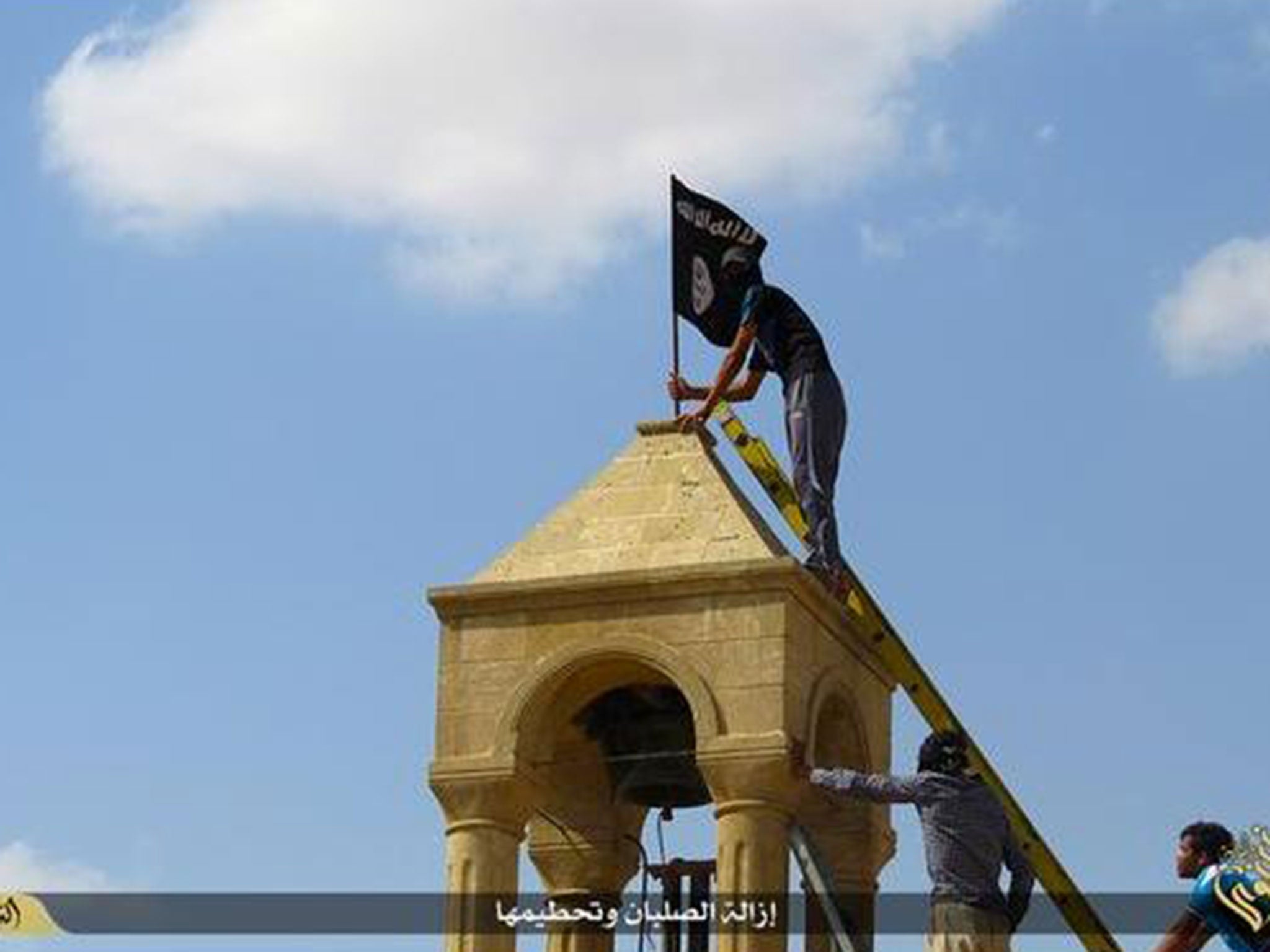
Your support helps us to tell the story
From reproductive rights to climate change to Big Tech, The Independent is on the ground when the story is developing. Whether it's investigating the financials of Elon Musk's pro-Trump PAC or producing our latest documentary, 'The A Word', which shines a light on the American women fighting for reproductive rights, we know how important it is to parse out the facts from the messaging.
At such a critical moment in US history, we need reporters on the ground. Your donation allows us to keep sending journalists to speak to both sides of the story.
The Independent is trusted by Americans across the entire political spectrum. And unlike many other quality news outlets, we choose not to lock Americans out of our reporting and analysis with paywalls. We believe quality journalism should be available to everyone, paid for by those who can afford it.
Your support makes all the difference.Isis militants have attacked a Christian church and cemetery in Iraq, vandalising crosses and defacing religious artefacts in yet another assault on the country’s rich cultural history.
In pictures released by the groups’s media arm, fighters are seen removing a cross and destroying a statue of the Virgin Mary at a church in Mosul, in Iraq. Another image shows a fighter erecting a black Isis flag in place of a cross.
Other photographs being circulated on social media show paintings depicting biblical events, such as the Last Supper, piled up on the floor. The extremist group attempts to justify this destruction by condemning the statues and religious symbols as idolatrous and therefore forbidden.
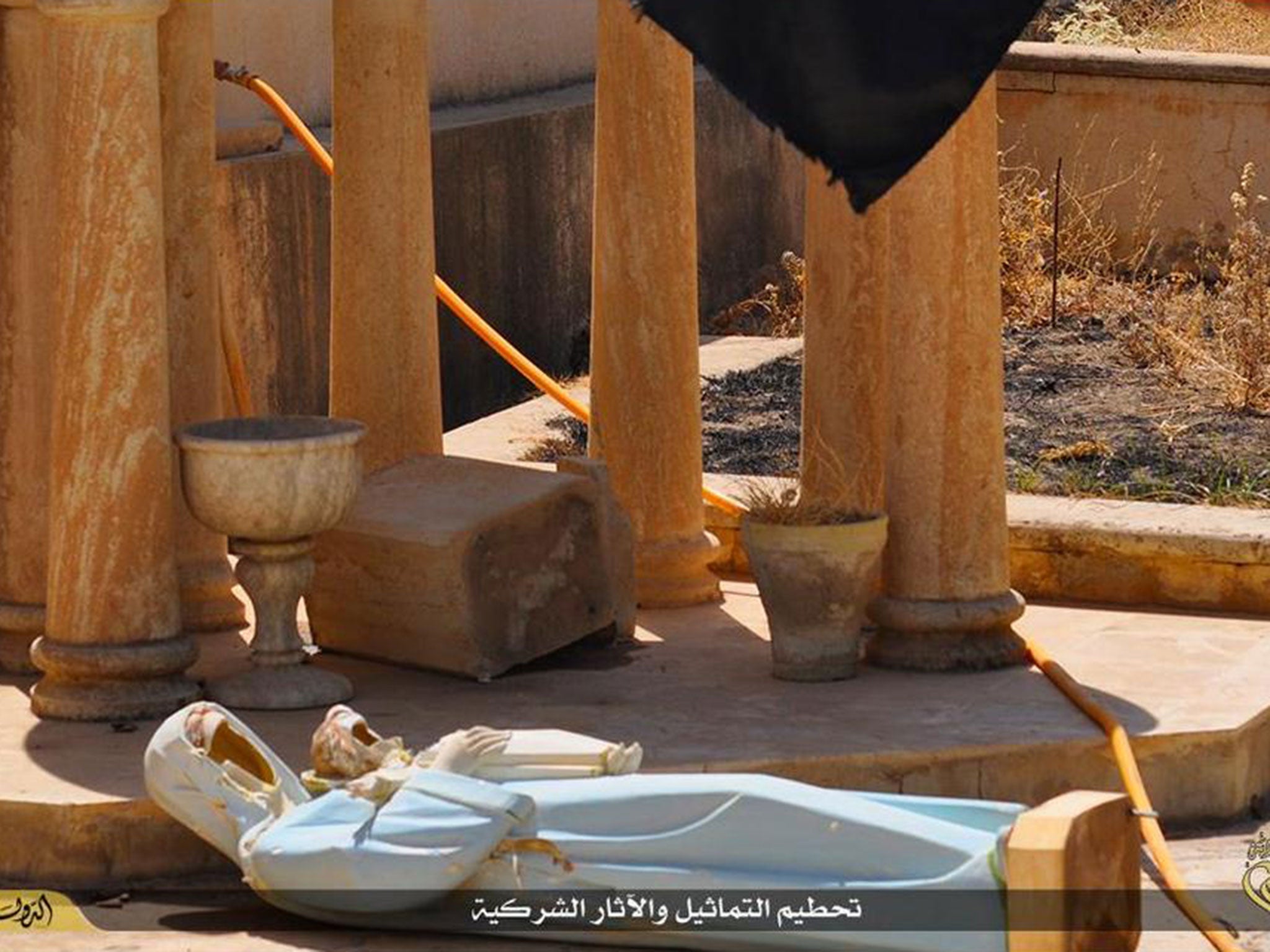
The pictures were published by the Ninawa provincial division of the Islamic State in Iraq, according to the SITE monitoring service.
The attack took place on 7 March but images of the destruction were not published until over a week later on 16 March, Elijah. J. Magnier, Al Rai’s chief correspondent, told The Independent.
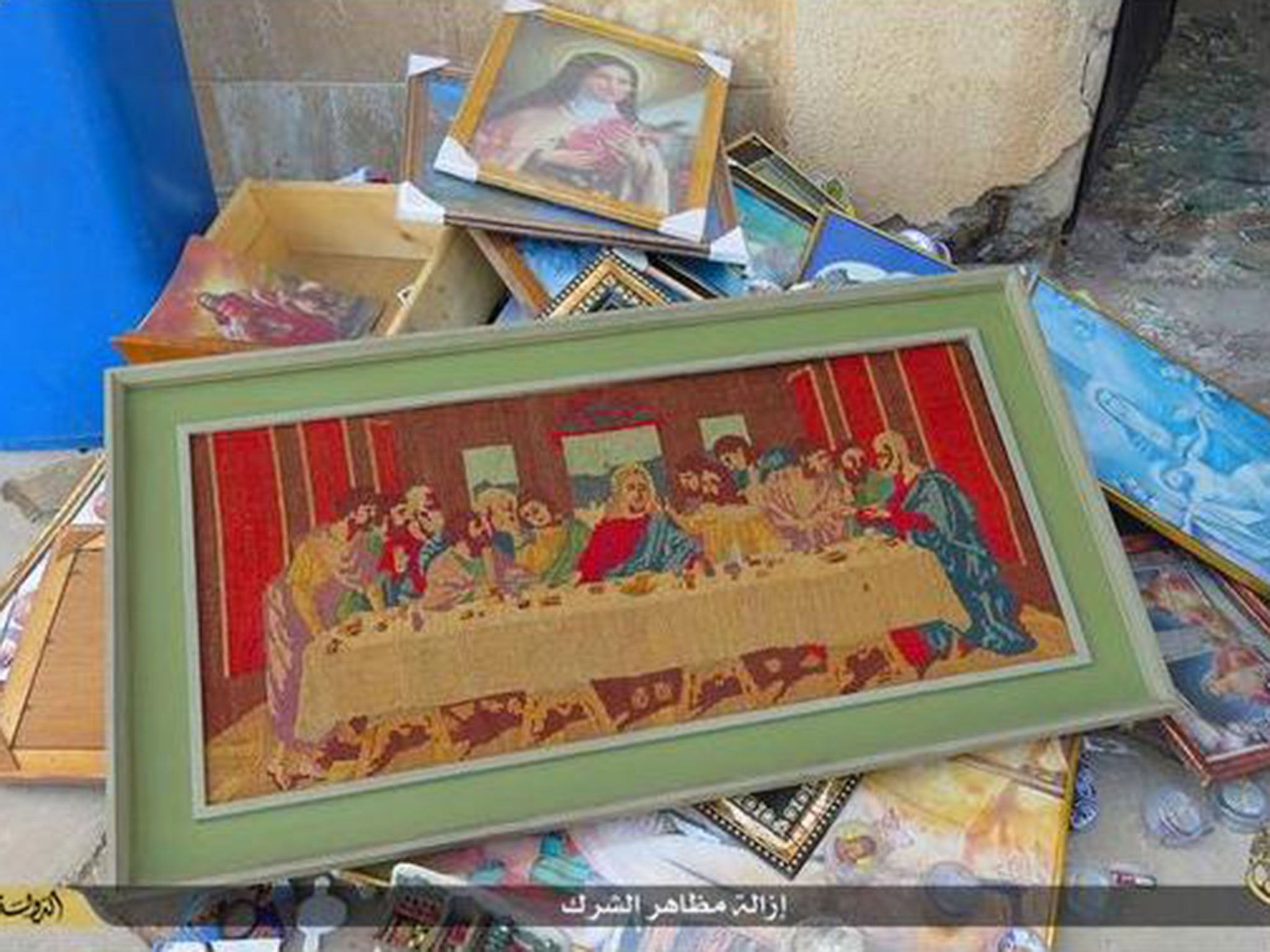
Militants took away all crosses, damaged statues and icons, removed the bell and any other Christian signs, he said. The church itself appears to still be standing.
Mr Magnier said the images were likely saved to be used as propaganda to distract from continuing losses in areas such as Tikrit, where the group is being targeted by Iraqi and Kurdish forces.
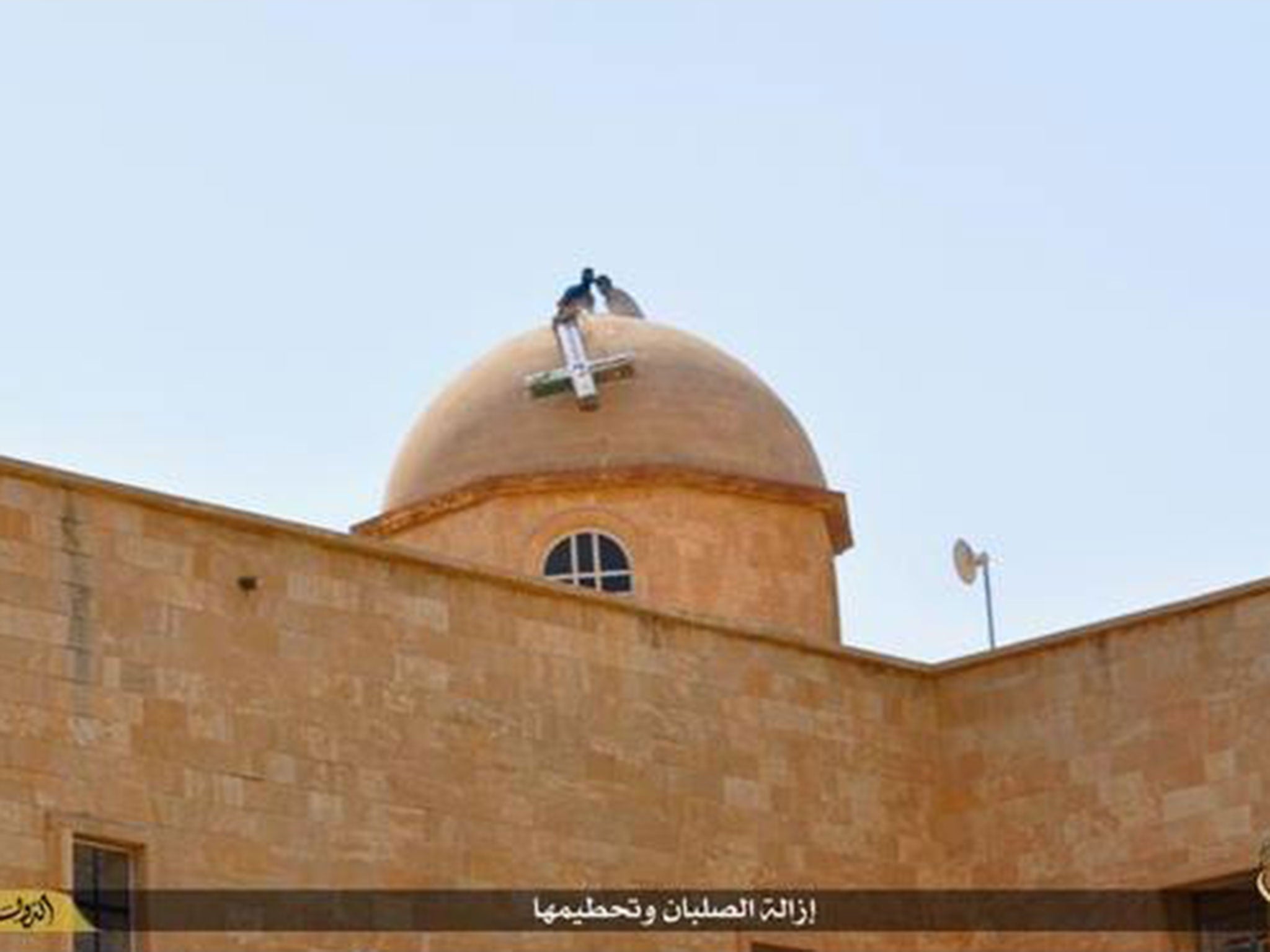
“What Isis is not aware of is the fact that more videos and photos of brutality, killing, beheading, mass execution and destruction of civilisation only creates more hate [towards the group] and more determination to defeat them,” he added.
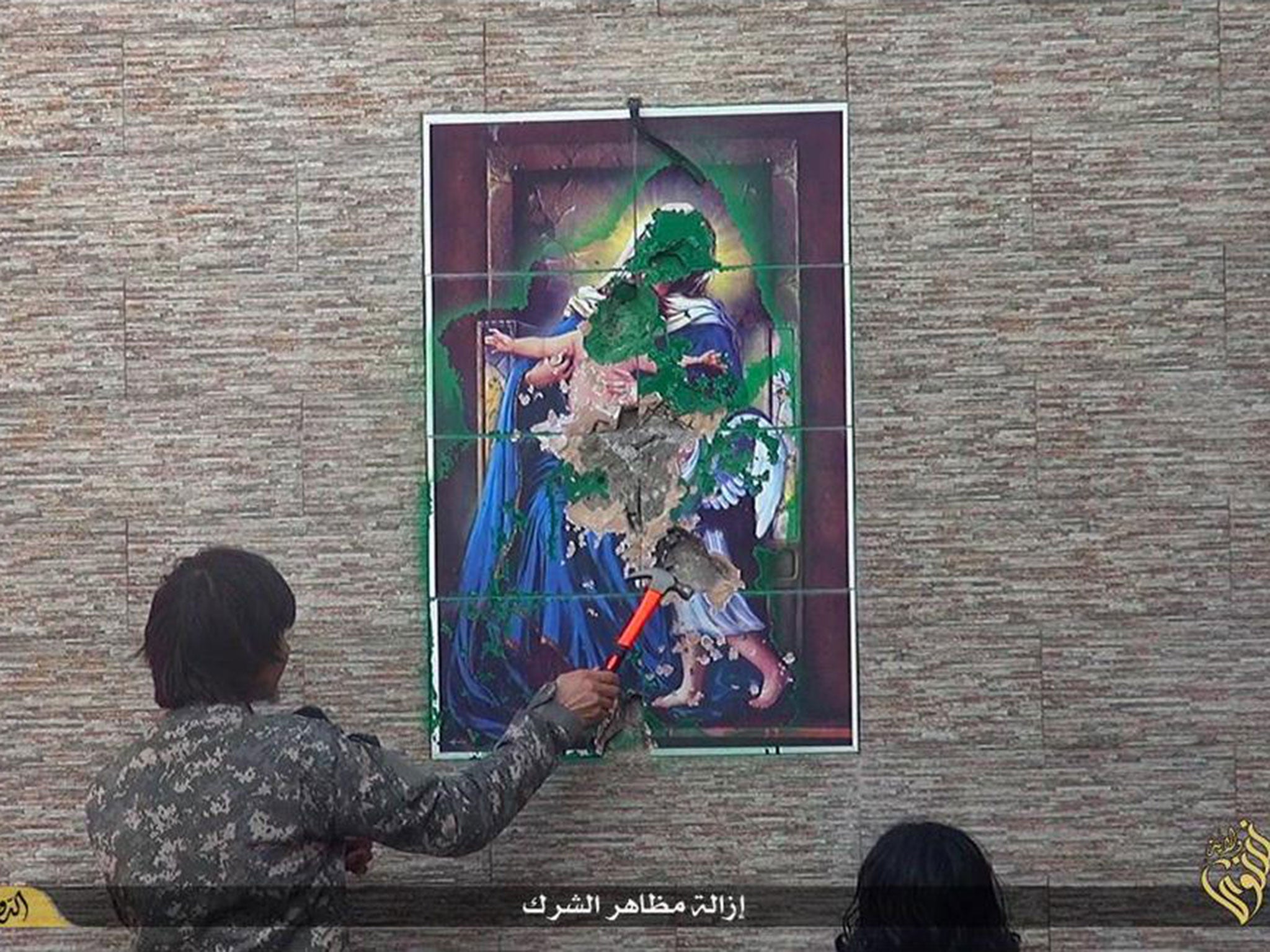
It is not known how old the church and its cemetery is, although Mr Magnier said many sites in that area date back as far as the 9th Century BC.
Isis has upped its devastating path of destruction significantly in recent weeks. Fighters ransacked Mosul Museum and destroyed centuries-old manuscripts and books in its library, bulldozed the ancient Assyrian city of Nimrud and demolished parts of the Unesco World Heritage City of Hatra.
Unesco condemned the destruction of Nimrud, a site founded over 3,300 years ago, as a “war crime”. Speaking after Hatra was subsequently targeted, Unesco’s Director General Irina Bokova denounced the destruction as “a turning point in the appalling strategy of cultural cleansing underway in Iraq”.
Join our commenting forum
Join thought-provoking conversations, follow other Independent readers and see their replies
Comments